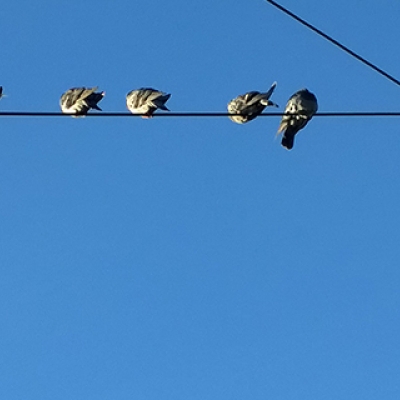


Island Press Staff Picks - Common Ground on Hostile Turf
By Meghan Bartels / On September 26th, 2014


Hello from NACCB 2014!
By Erin Johnson / On July 16th, 2014

There. I Said It.
By Lucy Moore / On June 3rd, 2014

From Idea to Printed Page
By Yoram Bauman / On May 7th, 2014
Editor's note: The very first copies of The Cartoon Introduction to Climate Change arrived at our office today and they look great. To celebrate, we asked coauthors Grady Klein and Yoram Bauman to tell us about their writing process. The Cartoon Introduction to Climate Change is our third cartoon collaboration, and for the most part we’ve settled into a nice rhythm, punctuated by occasional outbursts of frustration or pique.

Ranching and the Categorical Imperative
By Lucy Moore / On April 24th, 2014
When I was in grade school, my mother was a graduate student in philosophy, and I learned from her about the categorical imperative. What I grasped at that impressionable age was that if you are thinking about doing something, you should imagine that everyone around you, even everyone on earth, will do the same thing. Because if you have the right to do it, then, of course, so does everyone else. I immediately saw that I should not throw my gum wrapper out the car window. If everyone did that the air would be thick, the ground covered, with foil and paper.

Finding Your Voice
By Jason Leppig / On April 16th, 2014
Post by Nancy Baron
While not everyone may be interested in your science at first, many people are interested in scientists, as your work seems…mysterious. What do you actually do? Why are you so devoted to it? They want to know what makes you tick. Even if your research can seem obscure, they are often eager to discover a new perspective on the world through your eyes.

Books are Maps of Nature, Screens are Maps of Nothing
By Rafe Sagarin / On January 28th, 2014
Aníbal Pauchard and I argued in Observation and Ecology that despite the great advances information technology has helped us make in complex fields like ecology, the increasing time both children and adults spend in front of screens instead of out in nature will erode our abilities to deal with complexity. Our argument was experiential—our years of working in the field with many students showed us that those with the best abilities to discern patterns were those who spent abundant time as children just wandering around observing natu

Learning What Feels Green
By Rafe Sagarin / On October 28th, 2013
There’s a great interview of anthropologist David Howes in the 14 September 2103 NewScientist (subscription access) about the role of synesthesia in marketing products. Synestesia—the sense of mixing senses (experiencing color as a flavor, for example) is often portrayed as a special sense that all of us dabble in, but a select odd few (the Lolita author Vladimir Nabokov, for ex

